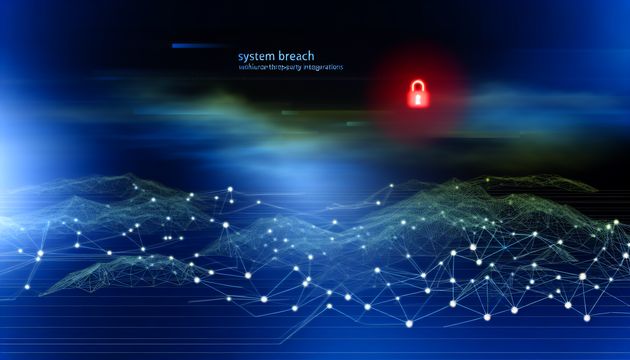
Understanding the CentreStack Security Flaw: A Critical Threat to File Sharing Systems
Imagine a locked vault that suddenly has a universal key, allowing anyone who finds it to open the door. This is similar to the recent discovery of a critical security flaw in the Gladinet CentreStack platform, identified as CVE-2025-30406. This vulnerability, a deserialization flaw due to a hardcoded cryptographic key, poses a significant threat to organizations relying on CentreStack for secure file sharing and remote access. The flaw allows attackers to execute arbitrary code on affected servers, potentially leading to unauthorized access to sensitive data. The vulnerability has been actively exploited since March 2025, highlighting the urgent need for organizations to address this security risk (source).
Overview of the Vulnerability
Nature of the Vulnerability
The vulnerability in question, tracked as CVE-2025-30406, is a critical security flaw found in the Gladinet CentreStack platform. This platform is widely used for secure file sharing and remote access, transforming on-premise file servers into cloud-like systems. The flaw is a deserialization vulnerability that stems from the use of a hardcoded cryptographic key within the CentreStack portal’s configuration file (web.config). This hardcoded key is a significant security oversight, classified under the Common Weakness Enumeration (CWE) as CWE-321, which highlights the risks associated with hard-coded cryptographic keys.
Exploitation Mechanism
Think of the hardcoded machineKey as a master key that, if discovered, allows attackers to craft a malicious payload that the server will trust and execute. This involves bypassing integrity checks by forging ASP.NET ViewState data, which allows attackers to inject arbitrary serialized objects and execute remote code on the server (source). The vulnerability has been actively exploited in the wild since March 2025, as noted by multiple cybersecurity agencies and reports.
Impact and Severity
The vulnerability has been assigned a CVSS score of 9.0, indicating its critical nature. Successful exploitation allows attackers to execute arbitrary code on the affected server, potentially leading to unauthorized access to sensitive systems and data. This poses a substantial security risk to organizations using the Gladinet CentreStack platform, especially those relying on it for managed service provider (MSP) operations, file sharing, backup, collaboration, and remote access (source).
Mitigation and Patching
In response to the active exploitation of CVE-2025-30406, Gladinet released a security fix on April 3, 2025. The patch addresses the deserialization vulnerability by updating the software to versions 16.4.10315.56368, 16.3.4763.56357 (Windows), and 15.12.434 (macOS) (source). Organizations using the affected versions of CentreStack are urged to apply these patches immediately to mitigate the risk of exploitation. Additionally, a CentreStack admin can manually delete the machineKey defined in the portal’s web.config file to prevent unauthorized access (source).
Recommendations for Organizations
Organizations using the Gladinet CentreStack platform should prioritize the following actions to protect against this vulnerability:
-
Immediate Patching: Apply the latest security updates provided by Gladinet to ensure that the vulnerability is addressed. This is crucial to prevent potential exploitation by threat actors.
-
Configuration Review: Conduct a thorough review of the CentreStack portal’s configuration files to identify and remove any hardcoded cryptographic keys. This proactive measure can help prevent similar vulnerabilities in the future.
-
Security Monitoring: Implement robust security monitoring solutions to detect any signs of exploitation or unauthorized access attempts. This includes monitoring network traffic and server logs for unusual activities.
-
Incident Response Planning: Develop and maintain an incident response plan to quickly address any security incidents related to this vulnerability. This plan should include steps for containment, eradication, and recovery.
-
User Education: Educate employees and users about the risks associated with this vulnerability and the importance of following security best practices. This includes recognizing phishing attempts and avoiding the use of weak or reused passwords.
By taking these steps, organizations can enhance their security posture and reduce the risk of exploitation associated with CVE-2025-30406.
Final Thoughts
Addressing the CentreStack vulnerability is crucial for maintaining the integrity and security of file sharing systems. Organizations must act swiftly to apply the patches released by Gladinet and review their configurations to remove any hardcoded keys. By implementing robust security monitoring and incident response plans, companies can better protect themselves against potential exploits. Educating users about security best practices is also vital in mitigating risks. As the cybersecurity landscape continues to evolve, staying informed and proactive is key to safeguarding digital assets (source).
References
- BleepingComputer. (2025). CentreStack RCE exploited as zero-day to breach file sharing servers. https://www.bleepingcomputer.com/news/security/centrestack-rce-exploited-as-zero-day-to-breach-file-sharing-servers/
- VuMetric. (2025). CISA warns of CentreStack’s hard-coded machineKey vulnerability enabling RCE attacks. https://cyber.vumetric.com/security-news/2025/04/09/cisa-warns-of-centrestack-s-hard-coded-machinekey-vulnerability-enabling-rce-attacks/
- Help Net Security. (2025). RCE Gladinet CentreStack file sharing exploited CVE-2025-30406. https://www.helpnetsecurity.com/2025/04/09/rce-gladinet-centrestack-file-sharing-exploited-cve-2025-30406/
- GBHackers. (2025). CISA alerts on CentreStack hard-coded key vulnerability. https://gbhackers.com/cisa-alerts-on-centrestack-hard-coded-key-vulnerability/
- Better World Technology. (2025). CISA CentreStack critical vulnerability. https://www.betterworldtechnology.com/post/cisa-centrestack-critical-vulnerability



